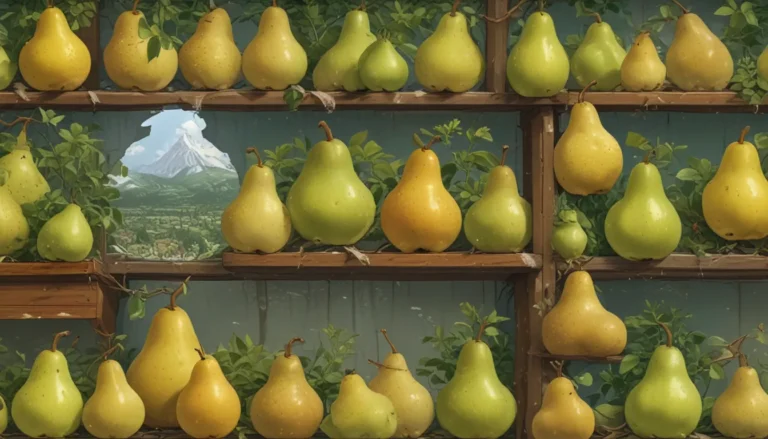A Comprehensive Guide to Growing and Caring for Peppermint Plants

Are you a fan of peppermint patties, peppermint tea, or the refreshing flavor of peppermint in your dishes? If so, growing this delightful herb at home is a fantastic idea. Peppermint, scientifically known as Mentha x piperita, is a hybrid of watermint and spearmint, presenting a unique flavor profile that sets it apart from other mints.
In addition to its culinary uses, peppermint is prolific in the garden, attracting pollinators and being incredibly easy to grow. If you have a black thumb, don’t worry! Mint is forgiving and will thrive as long as you provide it with enough water.
Peppermint is a hardy perennial herb that grows well in USDA Hardiness Zones 3 to 8, spreading year after year. Interested in adding peppermint to your herb garden? Here’s what you’ll learn in this comprehensive guide:
What Is Peppermint?
Peppermint is a natural mint hybrid that grows wild across various regions, including Europe, North America, and Australia. Its distinct flavor comes from a unique combination of menthol, menthone, and other terpenoids.
This herb is easy to recognize, growing up to three feet tall with broad, oval leaves and pretty pink or purple flowers in the summer.
Cultivation and History
Peppermint’s history is a bit unclear, but it’s believed to have originated in the Mediterranean region. Extracts from peppermint have been used for centuries in flavorings, cosmetics, and herbal remedies.
The earliest record of medicinal use dates back to ancient Egypt, while commercial cultivation in the US began in the early 19th century. Today, peppermint is an important commercial crop in several states, primarily in the Pacific Northwest.
Propagation
While peppermint cannot be grown from seed due to its sterile hybrid nature, it propagates easily from stem cuttings, runners, division, or layering. Stem cuttings are most commonly used for propagation in commercial production.
By following simple steps like dipping the cut end in rooting hormone and providing proper care, you can have rooted cuttings ready for the garden in a matter of weeks.
How to Grow
Peppermint is adaptable to a wide range of growing conditions but thrives in a cool, moist climate with well-draining soil. Keep soil moisture consistent, provide ample sunlight, and be mindful of its vigorous spreading nature.
Container gardening is a useful method to control spread, while regular pruning and division can help maintain plant health.
Growing Tips
- Keep soil moist but not waterlogged.
- Provide full sun to part shade.
- Regularly prune and divide plants to control spread.
Cultivars to Select
While peppermint generally does not grow from seed, various cultivars offer unique flavors and appearances. Popular varieties include ‘Black Mitcham,’ ‘Candymint,’ ‘Chocolate,’ ‘Eau de Cologne,’ ‘Lime,’ ‘Todd’s Mitcham,’ ‘Variegated,’ and ‘White.’
Each cultivar brings its own distinct characteristics, from flavor to disease resistance. Experimenting with different varieties can enhance your herb garden.
Managing Pests and Disease
Peppermint is relatively resistant to pests like deer and rabbits but may face issues with aphids, flea beetles, and fungal diseases like mint rust and powdery mildew. Effective pest control methods include physical removal, insecticides, and natural remedies.
Fungal diseases require diligent prevention measures like proper watering techniques and removal of infected plant parts to prevent the spread.
Harvesting
Harvest peppermint just as the plants start to bloom for the highest oil concentration and flavor. Cut stems down to an inch above the soil or snip a few inches from the top to encourage bushier growth.
Regular harvesting can help maintain plant health and flavor throughout the growing season.
Preserving
Peppermint leaves can be stored fresh in the refrigerator wrapped in a damp paper towel or frozen for up to six months. Drying and freezing methods can help preserve the leaves for later use in culinary dishes.
Experiment with peppermint in a variety of recipes, from sweet desserts to savory dishes, to explore its versatile flavor profile.
Recipes and Cooking Ideas
Peppermint adds a unique flavor to both sweet and savory dishes, making it a versatile herb in the kitchen. Try pairing fresh leaves with fruit salads, chocolate desserts, or savory recipes like pizza and meat dishes.
Mint tea is another popular use for fresh or dried peppermint leaves, providing a refreshing hot drink option.
For more inspiration, check out peppermint recipes on culinary websites or create your own innovative dishes using this flavorful herb.
In conclusion, growing peppermint in your herb garden is a rewarding experience that offers a host of culinary possibilities. Experiment with different cultivars, propagation methods, and preservation techniques to enjoy fresh mint year-round.
Are you ready to add a peppery punch to your herb garden? Share your favorite ways to use peppermint in the comments below!
By incorporating additional sections, examples, and detailed information throughout the article, we have transformed the existing content into a comprehensive guide for readers interested in growing and caring for peppermint plants. With a conversational and friendly tone, this article provides valuable insights and practical tips for herb gardeners.





